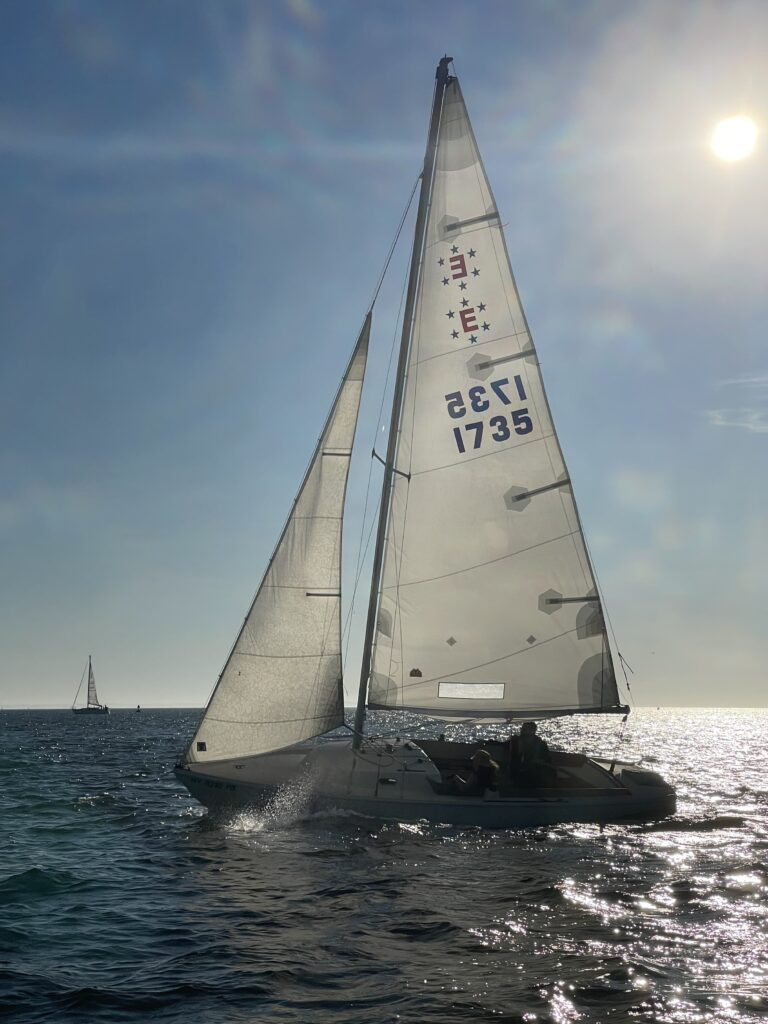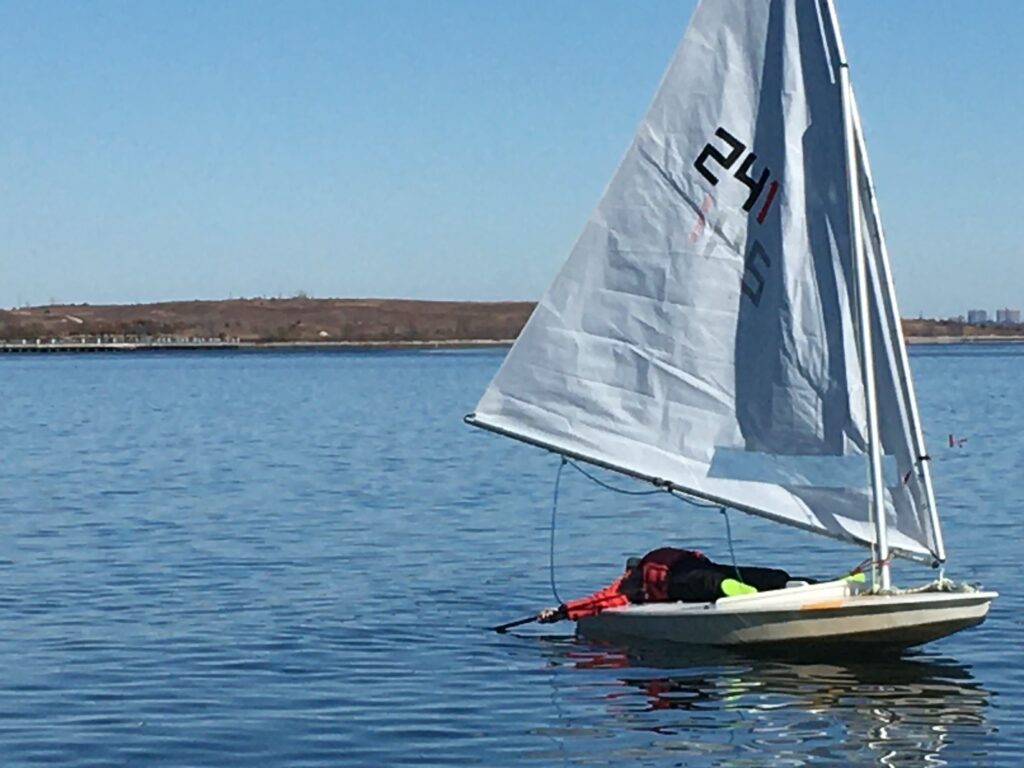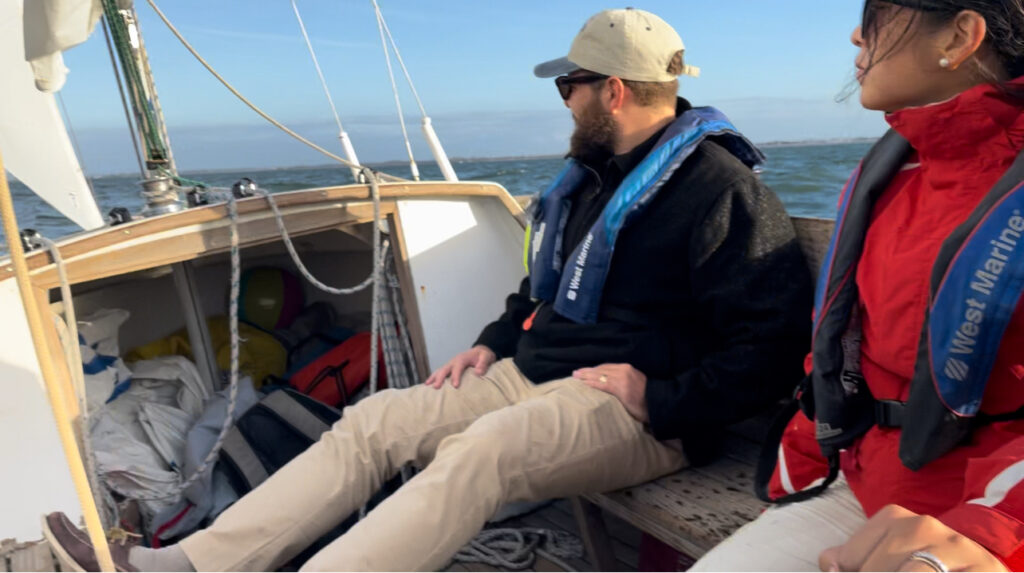Missed the boat this season? You can book NOW to learn how to sail a boat next spring or summer.
We’ve posted the 2025 learn-to-sail schedules, and earlier than we ever have. Why? Demand exceeds our supply, and the early-season schedules fill up early. How early? Now. Fall of and early winter (think January) see all the early choices taken for the coming season. So, if you can book now, or simply prefer to plan well in advance, now’s the time.

For the past few years, we’ve posted what I call a “skeleton” schedule in the fall for the upcoming season. This means a basic assortment of schedules without cramming too much in. We flesh it out as the season approaches, and then progresses, based mostly on demand and instructor availability. Anything we’re contemplating last-minute is strictly based on forecasts and any gut intuition on how the weather will play out. So, even if we have an instructor available to set up a custom schedule at the last minute, if the weather looks like a losing proposition, we hold off.
Weather & whether… that’s always the question. And, that’s why we structure our scheduling with some gaps to deal with the occasional makegood required when we lose too much time to weather. Everyone’s different, but a certain minimum number of days and hours works well across the board. Most schools schedule only 2 days for learn to sail courses, and have 4 students in the boat. That’s never going to work. Most students in those programs are NOT ready to skipper the boat – they’ve only gotten a solid introduction to the sport. They almost always need more time.
Our learn to sail course, Start Sailing, is typically 3 full days with each day spent mostly sailing. There’s very little shoreside theory – just enough to explain how the sailing skills we’re about to practice work. So, day one has a session of about 45’ to an hour. Day 2? Less. Day 3? Usually none! Each day typically has two breaks: lunch, and a mid-sail break in the afternoon for extra stopping practice at the mooring and also for bathrooms and a mental time out. Sometimes there’s a third break, most often on days with all sailing and zero theory.
“I don’t have your brains if I have your bladders.”
– wise clinician at a snowboard instructor clinic years ago when asking if candidates (including this author) were good, needed a break, etc, to entice anyone to speak up and ask for one.
A few times each season, we have some variations on that 3-day theme:
- 2-day accelerated schedule for people with significant prior experience. This can be a refresher, or to earn the new ASA 102. It’s also good for people who did a 2-day program at other schools and have suffered ever since.
- A weeknights schedule at the height of daylight savings. This is 4, sometimes 5, shorter sessions starting in the mid to late afternoon (as early as all students can arrive, but never later than 5pm).
We have some 2-day options scheduled already for 2025. The weeknights schedules are only added based on demand. You can ask us about that now, or in the spring. We can create one now, with the caveat being weather: you’d need to have flexibility to reschedule one or more sessions last minute based on that weather.

Also, we assign only three students to each boat, unless it’s a private group of four signing up together (and they’re told that the gen-pop maximum is 3 for perspective). With 3, everyone progresses quicker. With groups of 4, we sometimes need to add an additional half day or so to round things out.
If you can’t plan this early, don’t fret. We do add additional schedules as the season progresses. Also, while there’s an advantage in starting early because you have more season to sail after learning, some of the best sailing is in the middle to late summer. That’s because of the “sea-breeze” phenomenon. What’s that?
It’s when coastal areas get wind from the ocean in the afternoon. Details vary from place to place, and patterns have changed over many decades, but it’s like this…
Every day, as the sun gets higher, it heats up land masses more and more. Eventually, the land’s ability to absorb more radiation maxes out, and the heat rises as the sun keeps beating down on the land. When the hot air rises, something must take its place. Cooler air, which tends to drop instead of rise, comes in from the ocean.
It happens very suddenly and quickly; in a few minutes, one can see the dark band of wind on the water moving from the direction of the ocean toward your boat. It’s not like a line squall and thunderstorm – not THAT abrupt. But, it does roll in quickly. And, it’s often strong: upper teens to low 20-knot range is common. Fun! Cool breeze on a hot day – what’s not to love? Wind is good for sailing. The opposite? Not so much.
While a solid sea breeze can be a little much for some beginners, it’s predictable and stable. Once it kicks in, it’s fairly steady in strength and direction. That makes it easy to adjust to it. Big breeze? Small sails. If we were using a full mainsail before the sea breeze arrived, we usually “reef” it at that point. Reefing is making a sail temporarily smaller so it doesn’t lever the boat over, or heel it, too much. Some heeling is good. We deal with the heel by using smaller sails.

Anyway, as well as supplying some flavor of what learning to sail can be like, this was to illustrate that we don’t have summer doldrums where we sail. Unlike the “Dead Sea” as sailors from our new are like to call Long Island Sound, we have wind most of the time down in Sheepshead Bay and surrounding areas. We’re directly across Rockaway Inlet from Breezy Point, which we see from the windows of our host facility, Miramar Yacht Club. It’s called Breezy Point for a reason. (It’s also called The Irish Riviera, but that’s for a potential future Rant…)
The net-net: book a schedule now if you can. You can always change it with some advance notice (4 weeks; sometimes less or even last minute if there’s demand for your original schedule). And, regardless of when you wind up learning with us, if weather gets in the way, we don’t just say “oh, well” like most other schools and certify you without you deserving it. We have you come back another time.
Here’s a link to our schedule/buy page to look at and, if you like pull the trigger on booking for spring or summer of ‘25…